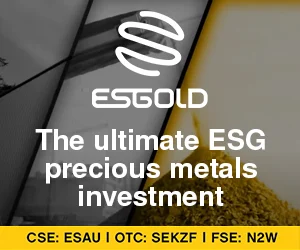In recent weeks, the precious metals market has exhibited a fascinating dynamic, particularly in the realm of Exchange-Traded Funds (ETFs). While gold ETFs have largely maintained stability, silver and platinum ETFs have shown a more mixed performance. This article delves into the current state of these ETFs, what it signifies for investors, and the broader implications for the precious metals market.
What’s Happening with Gold, Silver, and Platinum ETFs?
Gold ETFs have remained remarkably stable, with major players in New York and around the globe making only slight adjustments to their holdings. The SPDR Gold Trust, one of the most prominent gold-backed ETFs, has consistently held a steady 28 million ounces of gold. Meanwhile, the COMEX Gold Trust saw a modest increase of 3,775.6 ounces, suggesting a continued confidence in gold as a reliable investment.
In contrast, the ZKB Physical Gold ETF experienced a notable decrease of 14,116.6 ounces, indicating a potential shift in investor sentiment or a strategic reshuffling of assets. This mixed performance highlights the varying perspectives among investors regarding gold’s future.
When we turn our attention to silver, the iShares Silver Trust has remained stable, but the ZKB Physical Silver ETF has seen a significant drop of 56,006.6 ounces. This fluctuation suggests that investor preferences may be shifting, possibly in response to changing market conditions or industrial demand.
Platinum ETFs have also shown minor decreases, with both ABSA – NewPlat and ZKB Physical Platinum reporting slight declines. This cautious behavior among platinum investors reflects the complexities of the precious metals market, where industrial applications and economic forecasts play a crucial role.
What Does This Mean for Investors?
The current state of precious metals ETFs offers valuable insights for investors. Gold’s stability underscores its reputation as a safe haven during times of economic uncertainty. The resilience observed across major gold ETFs indicates that investors continue to value gold for its role in portfolio diversification. In an environment marked by geopolitical tensions and inflation concerns, gold remains a go-to asset for risk-averse investors.
On the other hand, the fluctuations in silver and platinum ETFs highlight the inherent volatility of these metals. This volatility can present tactical opportunities for investors who are willing to navigate the complexities of industrial demand and supply dynamics. Understanding these trends can help investors make informed decisions about their allocations in the precious metals sector.
The Bigger Picture: Precious Metals in a Balancing Act
The mixed trends observed in precious metals ETFs reflect broader economic conditions and investor strategies. Gold’s steadiness is likely tied to ongoing geopolitical tensions and inflation worries, which continue to drive demand for this traditional safe-haven asset. Conversely, the shifts in silver and platinum prices may be influenced by their industrial uses, which are closely linked to economic growth forecasts.
Investors should consider these factors when deciding on their allocations within the precious metals sector. The interplay between stability and volatility in gold, silver, and platinum can provide strategic insights into market trends and potential investment opportunities.
Conclusion
In summary, the current landscape of precious metals ETFs reveals a complex interplay of stability and fluctuation. Gold continues to shine as a reliable investment amidst economic uncertainties, while silver and platinum present both challenges and opportunities due to their inherent volatility. As investors navigate this intricate market, understanding the underlying factors driving these trends will be crucial for making informed decisions and optimizing their investment strategies in the precious metals sector.




